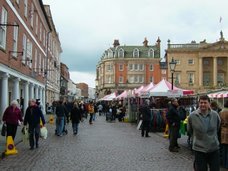 Out for a run this morning on my 1991 Honda C90 Cub. Seen here parked by the Little Witham river in Lincolnshire. The plan was supposed to be that I renovate mopeds in the winter and ride them in the summer. The main rationale for this being that I don't fancy getting cold and wet.
Out for a run this morning on my 1991 Honda C90 Cub. Seen here parked by the Little Witham river in Lincolnshire. The plan was supposed to be that I renovate mopeds in the winter and ride them in the summer. The main rationale for this being that I don't fancy getting cold and wet.
My recollection of riding a Triumph Tiger Cub in the winter in the early 60's is of being frozen to the point of immobility. Mind you it seemed to cure my chilblains as I have never had them since. My grandma's remedy for them was to soak the offending finger or toe in urine so maybe I had been doing that. My memory is not what it was.

Winter riding does not now seem so bad. There could be a number of explanations for this. Am I less sensitive than I was? My family support this thesis. Maybe I now have better weatherproof clothing. Looking at the pictures of me riding the old bike this could very well be the case. Perhaps I don't go fast enough. Almost certainly true.
Or is it global warming?
I bought the Tiger Cub from Tony Gray for £9.00 in 1963 and it was either a 1956 or 1959 plunger framed model. The registration number was KTL 266 and I wonder where the bike is now. If you know please get in contact.
In those days we painted our own helmets (you can probably tell). I still have the crash hat hanging in my garage. I originally painted it with green and black house paint, but whilst it was drying someone knocked it into some sawdust. My mother probably, always trying to spoil my teenage fun. The sawdust gave it an interesting texture but not much street cred with the other young bikers or the young women we tried to impress. It looked a little like a decorated half coconut on my head. Nothing for it but to sand it down and refinish in blue, black and white. An improvement though it still had a pimply appearance, a bit like it's 16 year old owner.
















